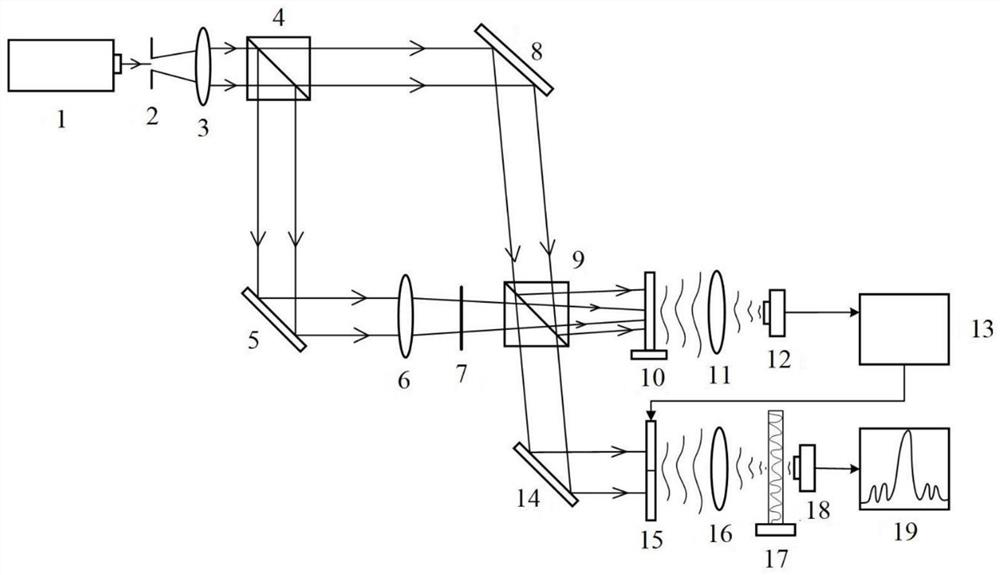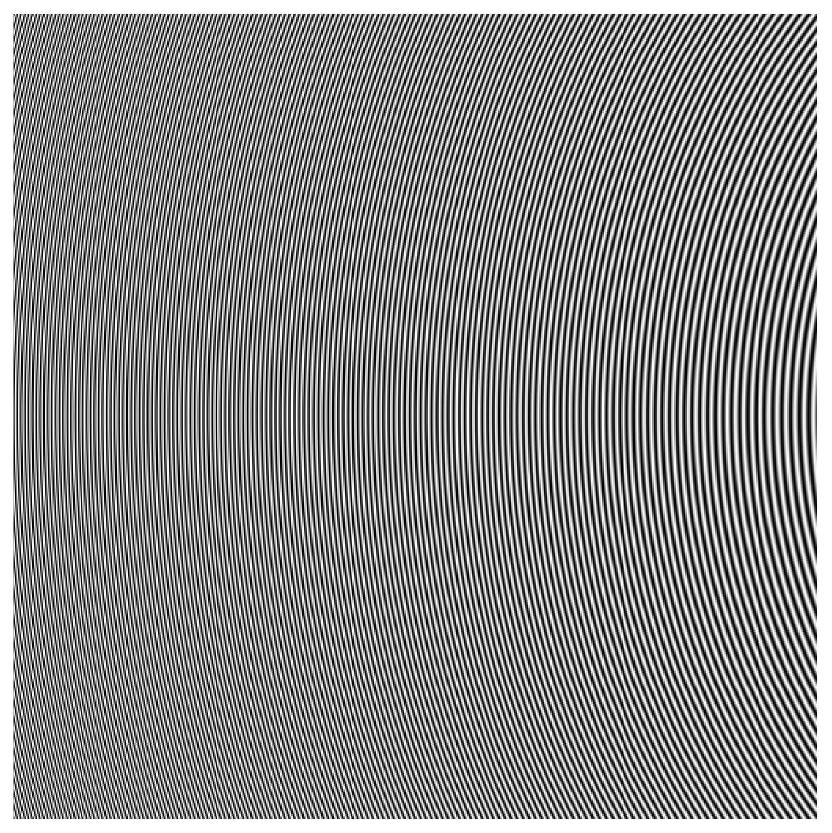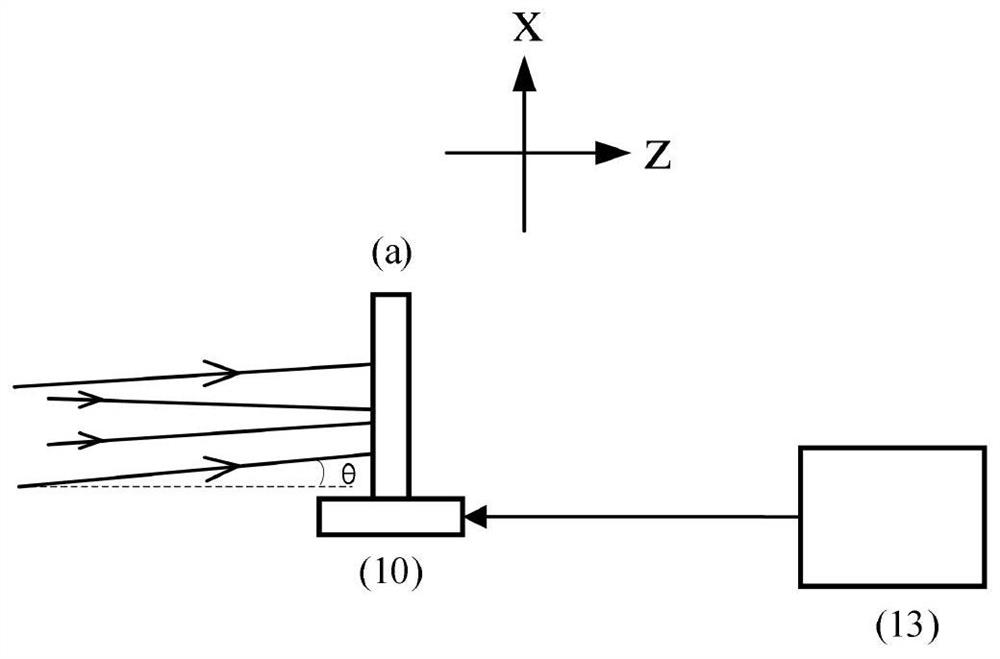Off-axis scanning holographic three-dimensional target real-time joint transformation recognition system and method
A three-dimensional target and joint transformation technology, applied in the field of optical scanning holography, can solve the problems of complex optical path of the system, and achieve the effects of easy correlation calculation, improved recognition efficiency, and increased possibility
- Summary
- Abstract
- Description
- Claims
- Application Information
AI Technical Summary
Problems solved by technology
Method used
Image
Examples
Embodiment 1
[0063] An off-axis scanning holographic 3D target real-time joint transformation recognition system, such as figure 1 As shown, the labels in the accompanying drawings respectively represent: laser 1, spatial filter 2, first lens 3, first beam splitter 4, first mirror 5, second lens 6, shutter 7, second mirror 8 , the second beam splitter 9, the first stage 10, the third lens 11, the first photodetector 12, the computer 13, the third mirror 14, the spatial light modulator 15, the fourth lens 16, the second carrier Object stage 17, second photodetector 18, real-time display 19; Wherein, the optical axis direction of the laser 1 outgoing light is consistent with the center of the spatial filter 2, and the spatial filter 2 is placed between the first lens 3 and the laser 1, and The distance between the spatial filter 2 and the first lens 3 is the focal length of the first lens 3; the first beam splitter 4 is placed vertically in the direction of the light transmitted by the first...
Embodiment 2
[0065] A real-time joint transformation recognition method for off-axis scanning holographic three-dimensional targets, specifically comprising the following steps:
[0066] (1) The parallel light emitted by the laser 1 is collimated and modulated into a divergent spherical wave by the spatial filter 2. The spherical beam passes through the first lens 3 to form a plane wave; the plane wave is divided into two paths by the first beam splitter 4, wherein the transmitted light path After the second reflector 8 and the reflected light path pass through the first reflector 5, the second lens 6, and the shutter 7, they converge at the second beam splitter 9, and the second reflector 8 is adjusted so that the plane wave is combined with the second beam splitter 9. The direction of the wave vector of the spherical wave forms a deflection angle θ, and interference occurs at the object plane to form an off-axis Fresnel zone plate, as figure 2 and 3 shown.
[0067] (2) The off-axis Fr...
PUM
 Login to View More
Login to View More Abstract
Description
Claims
Application Information
 Login to View More
Login to View More - R&D
- Intellectual Property
- Life Sciences
- Materials
- Tech Scout
- Unparalleled Data Quality
- Higher Quality Content
- 60% Fewer Hallucinations
Browse by: Latest US Patents, China's latest patents, Technical Efficacy Thesaurus, Application Domain, Technology Topic, Popular Technical Reports.
© 2025 PatSnap. All rights reserved.Legal|Privacy policy|Modern Slavery Act Transparency Statement|Sitemap|About US| Contact US: help@patsnap.com



